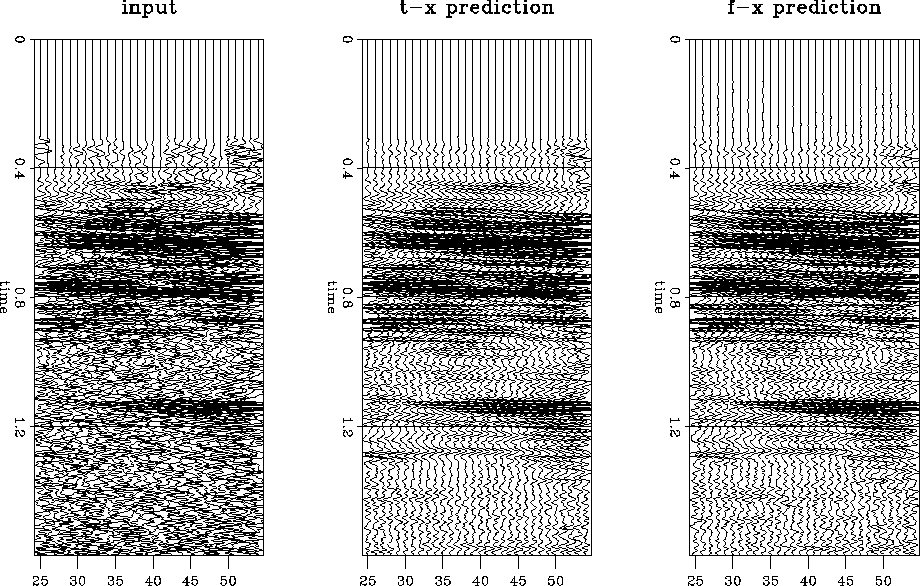




Next: The biasing of f-x
Up: TWO-DIMENSIONAL LATERAL PREDICTION
Previous: The relationship of f-x
We compared the
effect of varying the time-extents for prediction filters in the presence of
high-amplitude noise.
In a simple noise-only case,
when we used the same number of coefficients in the lateral direction
for both processes,
f-x prediction passed about twice the noise energy as
a short time-length t-x prediction.
As the time-length of the t-x prediction filter increased,
the t-x prediction passed more random noise.
When filters with a time-length comparable to the data time-length
were used,
we found almost no difference between the filters or between the
results of
t-x prediction and f-x prediction.
Thus, because of its ability to limit the filter length in time, t-x prediction has a
definite advantage over f-x prediction in removing random noise.
This difference in passing random noise is shown in
Figure 2,
where the results of the t-x prediction and f-x prediction
are applied to a two-dimensional stacked section.
We used a time length of five coefficients
for the t-x prediction result
and a
spatial length of five coefficients for both
the t-x and f-x prediction results shown in Figure 2.
The window sizes in both cases were 30 traces by 300 samples, or 0.6 seconds
in time.
This data set contains a moderate amount of noise
and was one of the few nonsynthetic data sets showing
recognizable differences between t-x prediction and f-x prediction.
While the results are similar, the f-x prediction passes somewhat more
noise than t-x prediction.
DDw
Figure 2
Two-dimensional t-x prediction and f-x prediction on
a stacked line.
The top section is the input; the middle section the t-x prediction result;
the bottom section the f-x prediction result.
The results of the two techniques
are similar, but somewhat less noise is passed with t-x prediction
than with f-x prediction.










Next: The biasing of f-x
Up: TWO-DIMENSIONAL LATERAL PREDICTION
Previous: The relationship of f-x
Stanford Exploration Project
11/16/1997
